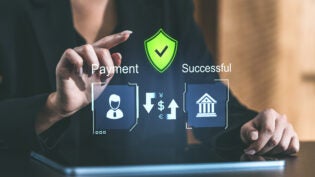
A smart merchant will accept a chargeback as what it is: a learning opportunity. It is a chance to evaluate and enhance your customer service. If you’ve been in business for even a short period of time, you probably know what chargebacks are. They are the expensive, aggravating—yet preventable—assault on a merchant’s bottom line. A smart merchant will accept a chargeback as what it is: a learning opportunity. It is a chance to evaluate your customer service and enhance customer satisfaction.
 Author: Jessica Adams works for Chargebacks911, a company that helps merchants prevent and dispute chargebacks. The biggest part of her job involves educating merchants about the short and long-term ramifications of chargebacks. Jessica hopes merchants will understand the gravity of chargebacks and the importance of prevention.
Author: Jessica Adams works for Chargebacks911, a company that helps merchants prevent and dispute chargebacks. The biggest part of her job involves educating merchants about the short and long-term ramifications of chargebacks. Jessica hopes merchants will understand the gravity of chargebacks and the importance of prevention.
Why Chargebacks Happen
Chargeback instigators fall into two categories: fraud and customer dissatisfaction. While you should definitely take steps to detect and prevent fraud, you should also address your customer relations policy. Some customers are great. They are loyal and friendly—you wish they were all like that! However, they aren’t. Not all customers are a pleasure to do business with. Some are demanding, obnoxious, and hard to please. Unfortunately, in order to run a successful business, you need to be able to interact with both types of customer.
Related Article: Avoiding Charge-Backs
Consider the Following Example
Bobby placed an order late Sunday night. He selected the cheapest (and therefore slowest) shipping option. However, he fully expected the package to arrive on Tuesday. Following their normal protocol (and the customer’s shipping requests), the merchant sent the package first thing Monday morning—with the delivery company Bobby chose. Tuesday came and went. Bobby (obviously) didn’t receive his package. By Thursday, he was in an uproar. Bobby called his credit card company. “Refund my money! I never received the package!” The package arrived Friday morning.
What Went Wrong?
Technically, the merchant didn’t do anything wrong. However, the merchant also didn’t do everything right. Bobby never should have been under the delusion that his package would arrive on Tuesday. He should have had a thorough understanding of the various delivery date options. You must set a customer’s expectations properly. If you don’t, chargebacks will happen. The above mentioned chargeback was entirely preventable.
Addressing Product Expectations
If customers don’t understand what they are buying, they are much more likely to return the product. Or, in a worst case scenario, they’ll instigate a chargeback. Consider the following:
- Write product descriptions that thoroughly explain the item in an easy to understand fashion.
- Include all pertinent information—like the dimensions, weight, and other applicable measurements.
- Tell consumers about the materials used to construct the product.
- Include high quality photographs of each product. Include a zoom feature or a way to enlarge the image.
- Make sure the customer can still view the product information from the shopping cart.
Addressing Shipping Expectations
Customers have no idea what goes into the process of fulfilling an order. They think you grab the item off the shelf, toss it into a box, and send it out the door. Therefore, it is especially important that you tell them exactly what to expect.
- Give them a good idea of when the order will be sent—”Usually ships within two business days.”
- When they go to select the shipping option, let them know the anticipated delivery date for each carrier—”UPS Ground usually takes three to five business days.”
- Be sure to add the anticipated deliver date to the order confirmation email you send.
Addressing Policy Expectations
Returns and exchanges aren’t a terrible thing. And, just because a customer requests one doesn’t mean you’ll never hear from her again. In fact, if you address the customer’s dissatisfaction in an acceptable way, she will likely turn into a very loyal customer. Therefore, it isn’t necessary to hide or be ashamed of your return or exchange policy. Consider doing the following:
- Share a link to your policy page (including returns and exchanges) right on the product page. You might want to include it on the checkout page too.
- Make sure your policy includes step-by-step instructions on how to make a return or exchange.
- Ask customers to accept your company’s policy before they click “buy.”
- Share the link to your policy page again in the order confirmation email.
- Make sure you always pay refunds in a timely fashion.
Fight Back!
Once you have optimized your customer service, fight back. Put all those policies and descriptive words to good use. Don’t be afraid to dispute chargebacks; your company could save a substantial amount of money.
Take Bobby for example; he fired off a complaint to the company, moaning that he didn’t receive his package until Friday. All the merchant had to do was print that email, attach it to the delivery confirmation from the shipping company and send it off to the credit card company. Chargeback denied. He did receive the package.
Going Forward
Chargebacks are extremely unpleasant for both the merchant and customer. They can have a devastating, long lasting effect on your business. Try to use each chargeback as a learning opportunity. Look at chargebacks as a chance to improve your customer service and create a better company.
 Author: Jessica Adams works for Chargebacks911, a company that helps merchants prevent and dispute chargebacks. The biggest part of her job involves educating merchants about the short and long-term ramifications of chargebacks. Jessica hopes merchants will understand the gravity of chargebacks and the importance of prevention.
Author: Jessica Adams works for Chargebacks911, a company that helps merchants prevent and dispute chargebacks. The biggest part of her job involves educating merchants about the short and long-term ramifications of chargebacks. Jessica hopes merchants will understand the gravity of chargebacks and the importance of prevention.
Published: January 13, 2015
3549 Views
3549 Views












